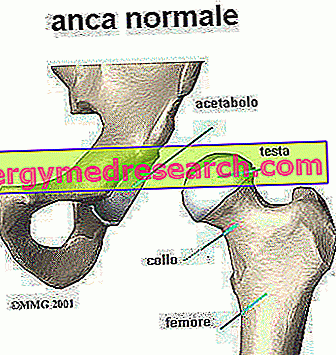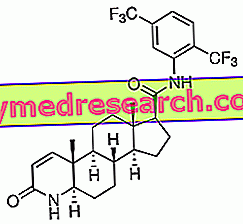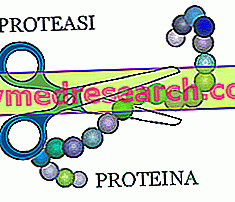Edited by Francesco Magagnini
Introduction
More and more the work of fitness instructors must meet the needs of those customers who present simple problems and physical dysfunctions or even serious pathologies.
It is essential to be able to adapt one's knowledge of anatomy, physiology, psychology and training theory to the individual client.
The trainer will therefore be able to improve his success and above all his "functionality", moving away from the common practice of adapting "universal" training models and stereotypes to each client.
The practice of fitness and any other sport (if practiced with serenity and technically correctly) has the peculiarity of improving the psycho-physical situation of the person. For the amateur sportsman, not in an exasperated search for "performance", the moment of aggregation that sport represents also becomes fundamental. As for fitness, we are talking about a sport for everyone, a "non-class" sport, which does not force us to buy expensive equipment and commits us to register in exclusive clubs.
The goal of the trainer will therefore be to try to make the sport practice for the dysplastic subject as smooth and functional as possible, with a view to social and relational growth and in terms of improvement or at least of no worsening of the pathology.
Finally it is necessary to say that the theoretical preparation of the trainer becomes fundamental also to know where his / her work ends and to have the lucidity to lean on medical personnel and specialized therapists.
Hip anatomy
The hip joint or coxofemoral joint, which joins the femur to the pelvis, is an arthrosis: it has the head of the femur moving in the acetabulum. (see figure 1).
A smooth and soft tissue, the cartilage, covers the two surfaces. Cartilage has the main function of sliding the two articular surfaces over each other and of distributing the loads acting on the hip in the best way.
Muscles, ligaments and tendons surround the hip joint. The muscles attach to the bone via a strong tissue, the tendon. The two bones are linked to each other by fibrous ribbons called ligaments.
 During the movement, the cartilage allows the two surfaces to slide over each other, the muscles give force to the movement, the ligaments and tendons support the muscles and the synovial fluid makes the movement fluid. Fig. 2: radiographic image of a normal hip → | Inside the joint and around the ligaments there is a thin membrane that produces a liquid, the synovial fluid. Synovial fluid allows the joint to move easily. ← Fig. 1: hip anatomy .  |
Hip disorders
Congenital dysplasia of the hip
It is a congenital anomaly of the development of the components of the hip joint, which leads to the progressive loss of normal anatomical relationships between the femur and pelvis.
At the expense of the acetabulum the alterations are a reduced depth of the cotyloid cavity eg fugitive of the cotyloid roof ; for the femoral head malformations are an excessive valgus of the femoral neck, anterversion of the femoral neck and delay in the appearance of the ossification nucleus of the femoral head .
It affects 2 infants out of 1000, especially females. The inheritance of this disease is often evident. If the diagnosis is made early, it is possible to obtain a normal development of the joint thanks to the use of special braces in the first months of life. If it is not treated, congenital dysplasia of the hip inevitably leads to a picture of major osteoarthritis, which subverts the normal anatomy of the hip (see figure 5). In the adult two conditions can occur, depending on whether the hip is dislocated or not. In the first case, the problems are more often borne by the column (hyperlordosis) and the knee (valgus), which are forced to compensate for a functional overload. In the second case, a subluxated or centered hip but with a shallow acetabulum (residual dysplasia) may develop severe arthrosis early, which differs from the primary one due to the severe limitation of external rotation and the important shortening of the limb.

Figure 5: the radiographic image shows the arthrosic degeneration of a dysplastic hip on the left
coxoarthrosis
Hip arthrosis or coxarthrosis is a frequent and highly debilitating disease. In the vast majority of cases the cause is not known (idiopathic coxarthrosis), in other cases osteoarthritis can be the consequence of traumas to the hip or congenital alterations such as congenital dysplasia of the hip. In its primitive form it affects individuals older than 65 years.
Osteoarthritis is characterized by progressive damage to the articular cartilage, up to the loss of free space between the two bones of the joint (see figures 3 and 4).
These, no longer protected by cartilage, are subject to wear.
 |  |
Figure 3: radiographic image of initial arthrosis. | Figure 4: the radiographic image shows the evolution of the previous picture |
Customer approach
A "Rogerian" approach
According to Carl Rogers every individual has strong pushes towards growth, health, adaptation; towards that which is called self-realization ( actualizing tendency ).
Approaching fitness clients "rogersianamente" means recognizing in the client a person who, as such, is in an egalitarian position towards the trainer.The peculiar characteristic of this contact is that it puts the experience of the client, the trainer and the immediate present of their relationship, the center of attention in every meeting.
The trainer tries to place his work as close as possible to the client's experience in the present relationship. The individual's experience is taken seriously without any precondition, but simply as it is immediately: how the person has become and is through his relationships, what is in the present and how he is capable of becoming in the near future. This includes the becoming of the person, as it is in relationships, as it is at present and how it manages to develop further in its future. This approach gives confidence to the client's ability to be able to live his life and to face problems relying on his own resources, if he can live a relationship where certain facilitating conditions are present. All this involves breaking with the traditional image and function of the trainer as an expert on customer problems. On the contrary, the trainer considers himself a collaborator and a companion who grows together with the client in a person-to-person encounter process.
The most obvious essence of these assumptions is that there is not a preconceived theory to which one must adapt, to which one must try to correspond . There is no objective truth to which to have to refer, the only truth is the experience of the person in difficulty . According to this thought, each individual is the only one who has the key to himself, that is his own awareness of himself and therefore the answers to his questions and the solutions to his problems . In this perspective, the focus of attention is centered on the existential dimension of the relationship established between two or more people. And it is precisely the intensity of the quality of the relationship that allows people and groups to communicate effectively, develop, evolve, solve problems, express their potential to the full, grow.
For a good relationship to be established in a perspective of improvement and growth, the empathic understanding of the trainer of the client's inner world and of his communication is necessary. Empathy is the ability of the trainer to see the client's experience as if it were the client himself. However, it is important that the "as if" condition is not lost because empathy is the ability to listen, to read the emotions of the other and not to identify the therapist with the client.
Gym training
Training in the gym of a dysplastic subject will take into consideration the improvement of joint mobility, muscle tone and all the conditional and coordinative skills, in order to guarantee daily activities without particular problems or limitations.
The extensor muscles of the lumbar region of the bust, in particular the Square of the loins and Sacrospinal, if excessively tonic and "shortened" tend to rotate the pelvis in anteroversion, therefore to accentuate the lumbar lordosis, a very common situation in a dysplastic subject.
On the contrary, the flexor muscles of the bust (Rectus of the abdomen, Internal oblique, External oblique) and the extensor muscles of the thighs (Piriformis, Great gluteus, Biceps femoris, Semitendinosus, Semimembranosus, Great adductor) balance the action of the extensors of the bust by acting in the retroversion of the pelvis.
We will therefore concentrate on free-body exercises and with machines that involve the aforementioned muscles.
As for the work on the buttocks we analyze the movement of extension of the thigh on the pelvis: the extension is the movement that brings the lower limb posterior to the frontal plane. As for bending, its amplitude is different depending on whether it is active or passive and that it occurs when the knee is flexed or extended. Typical values for an active extension are: 20 ° and 10 ° respectively for extended knee and flexed knee.
We will therefore prefer the extended knee extension to give more stability to the hip joint and allow us to work more safely.
As for the abdomen we will work with the legs stretched in support of the back (inclination> 45 °): this position will be taken to allow a subject with an untrained abdomen to tone the latter without "helping" with the action of the muscles of the thigh and the iliac psoas that intervenes in the flexion of the thigh on the pelvis ("classic" position for the crunch).
The first exercises that can be performed will therefore be the following:
Flexion of foot extensions (contraction, elongation of the triceps of the sura, tibial, peroneal)
With the leg extended, bend the knee and the hip without lifting the heel from the floor.
Isometric contractions of the femoral quadriceps. Maintain the contraction for 6 -10 '' with a rest of 4-5 '' between repetitions.
Contract the quadriceps muscle and keeping it contracted, lift the lower limb about 20 cm. Stay in that position for 8-10 ".
Isometric contractions of the buttocks from a prone position. Maintain the contraction for 6 -10 '' with a rest of 4-5 '' between repetitions.
Abductions slipping on a smooth surface without detaching the lower limb from the ground supporting a chair, armchair or a bar on the wall.
Hip bends less than 90 ° while maintaining the position for a few seconds.
Hip extensions without arching the back, keeping the position a few seconds.
Hip abductions keeping the knee and foot straight.
Crunch on the ground with legs extended to support the back.
Crunch on obliques with legs extended in support of the back.
Later you can add to the training:
Elastic hip extensions
Elastic hip abductions
Hip flexion with elastic
Standing Leg curl
We will then initially perform 12-15 repetitions for 2 series, which will gradually be increased to 4.
You can later replace the rubber bands with kilo anklets. It will be good in this period to also perform 10 minutes of bike at the beginning and end of training, keeping the saddle very high or starting with the pedaling backwards.
Bibliography



